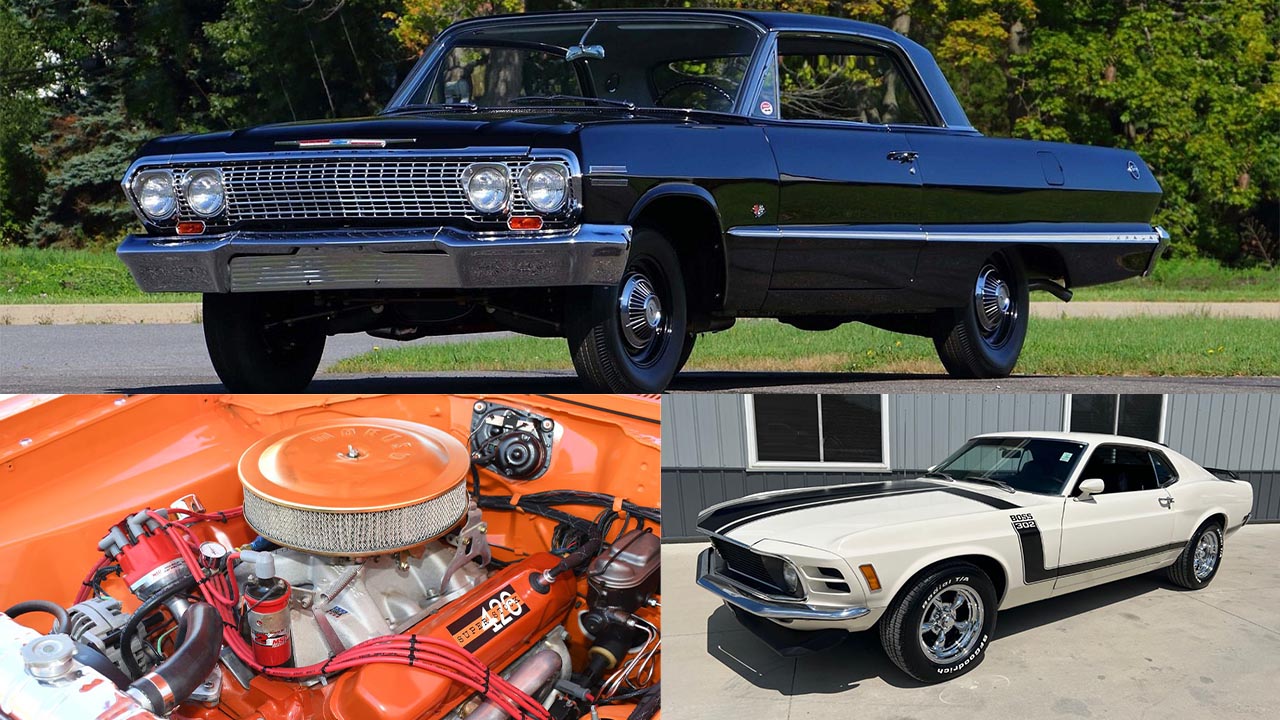When it comes to defining what makes a muscle car, some criteria—like size and the number of doors—are flexible. But one requirement is absolutely non-negotiable: the engine.
No matter how aggressive or stylish a car may appear, without a powerful V-8 under the hood, it’s nothing more than a glorified grocery-getter. The muscle car’s Golden Age was firmly rooted in V-8 dominance, kicking off even before the Pontiac GTO launched in 1964, and intensifying as manufacturers engaged in a full-blown horsepower war.
The V-8 isn’t just a feature of muscle cars—it’s the heartbeat of their identity. Many of the most legendary models earned their reputations thanks to their iconic engines. Detroit’s relentless drive to pack more horsepower into their cars during the classic era didn’t just shape a generation of vehicles—it left a lasting imprint on American performance engineering that continues today.
There’s a clear evolutionary path from the raw power of classic muscle to today’s high-tech beasts. Below are the V-8 Titans that didn’t just contribute to the muscle car’s story—they defined its legacy and future.
To ensure accuracy and relevance, this article draws on data from a range of authoritative sources, including major manufacturers like Chevrolet, Chrysler, and Ford. The engines are ranked by horsepower, starting from the lowest and working up.
Ford Boss 302
Maximum Power: 290 Horsepower
A small-block engine with 290 horsepower might seem like an odd fit for a list of V-8 Titans, but “titanic” isn’t just about size—it’s about impact. And few engines have had a bigger influence on muscle car culture than the Ford 302.
Originally developed for the 1969 Mustang Boss 302, this engine was designed with SCCA Trans Am Racing in mind, prioritizing endurance over straight-line speed—at least initially. What started as a modest powerplant soon began an extraordinary evolution.
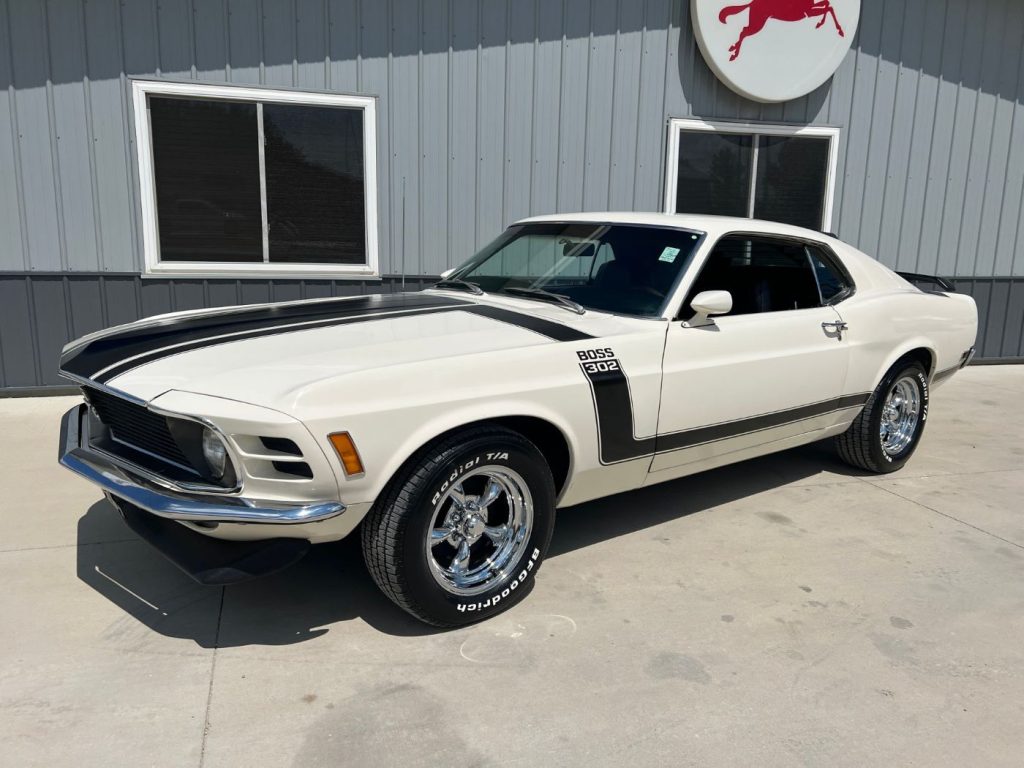
With a displacement of 302 cubic inches (equivalent to 5.0 liters, technically 4.9), the 302 holds a special place in Mustang history. During the underwhelming Mustang II era, it was the only V-8 option available.
Later, with the rise of the beloved Fox Body Mustang, it re-emerged as the 5.0-liter and became the defining engine of the 1980s. The story didn’t end there.
The 302 was reborn once again as the 5.0-liter Coyote V-8, now powering the modern Mustang Dark Horse and delivering a jaw-dropping 500 horsepower. That’s a 55-year journey of continual reinvention—and a compelling reason why the Boss 302 earns its title as a true Titan.
Also Read: 12 Sports Sedans That Outlast SUVs With Top Endurance
Buick 455 Stage 1
Maximum Power: 360 Horsepower
When GM finally lifted its restrictive policy that limited engines in intermediate cars to under 400 cubic inches, Buick seized the opportunity to create its most formidable muscle car of the era.
The result was the 1970 GSX, the only Buick from the Golden Age capable of a 13-second quarter-mile—and the secret behind that performance was the 455-cubic-inch Stage 1 V-8 lurking beneath its aggressively styled hood.
While the engine was officially rated at 360 horsepower, that figure was almost certainly conservative. More importantly, it cranked out a staggering 510 pound-feet of torque, delivering explosive acceleration from a standstill.
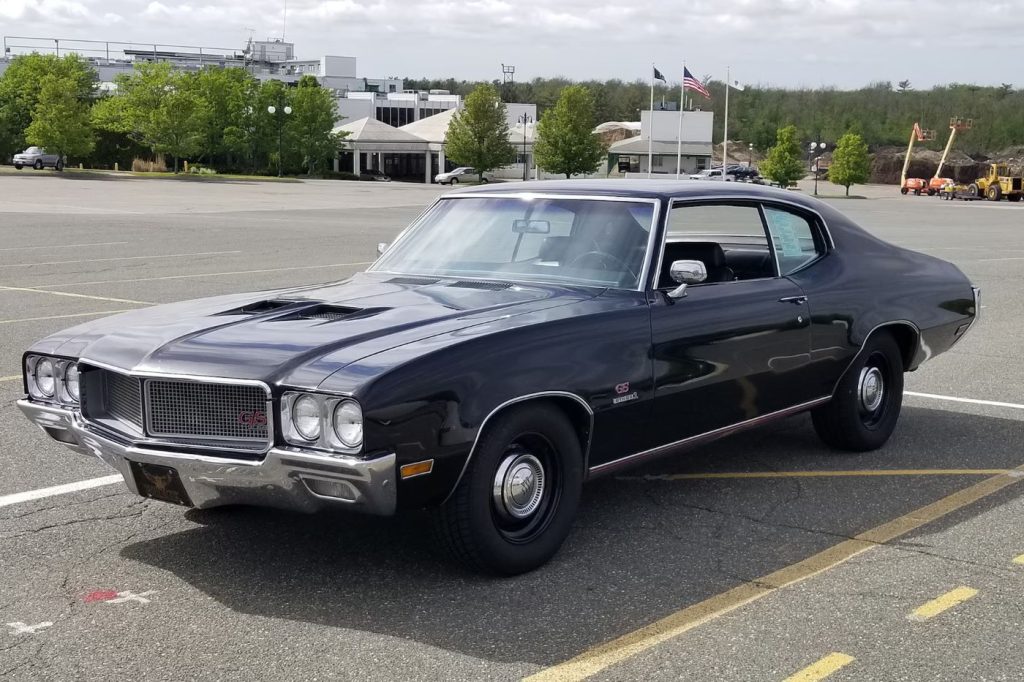
Engine Specifications And Applications
One of the more impressive engineering choices was the use of thin-wall casting in the 455, which made it noticeably lighter than other engines of similar size. That weight savings helped improve the GSX’s power-to-weight ratio, enhancing its real-world performance.
Unfortunately, the ’70 GSX would prove to be a brief flash of greatness. In the years that followed, the 455 would suffer from detuning, transforming into a much less formidable version of its former self.
Still, for that one incredible year, the GSX was a true street legend. It also marked the beginning of a Buick performance legacy that would later produce the 1987 GNX—an iconic machine capable of ripping through a quarter-mile in just 12.7 seconds.
Pontiac 400 Ram Air IV
Maximum Power: 370 Horsepower
The 1964 Pontiac GTO is often credited with igniting the Golden Age of American muscle cars, and it did so by boldly pushing back against GM’s own engine ban with a high-performance intermediate. Initially fitted with a 389 Tri-Power V-8, the GTO laid the groundwork for more aggressive upgrades.
By 1967, Pontiac expanded the displacement to 400 cubic inches, which maxed out what was allowable at the time. With size capped, engineers turned their focus to extracting more horsepower—leading to the creation of the high-performance Ram Air variants of the 400.
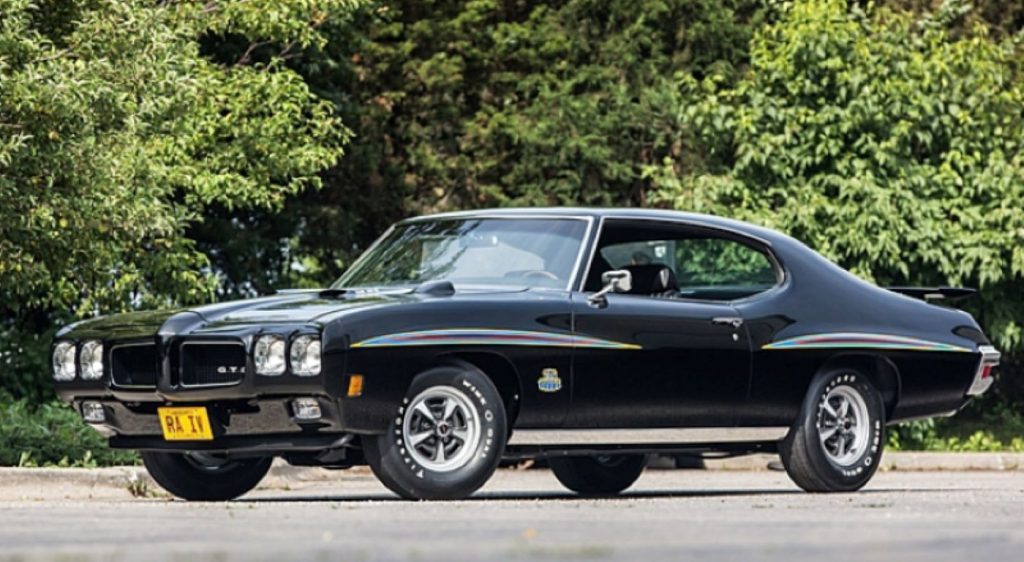
Engine Specifications And Applications
The 1969 Ram Air IV was the most potent version of the 400, boasting a more aggressive camshaft, increased compression, and improved airflow compared to the standard 400. These enhancements allowed it to deliver the kind of performance typically reserved for engines with larger displacement.
Even after GM dropped its engine restrictions in 1970 and Pontiac introduced a 455-cubic-inch V-8 for the GTO Judge, it was still rated at just 360 horsepower—less than the Ram Air IV’s 370. The 1969 Judge equipped with the Ram Air IV became the first GTO to break into the 13-second range, setting a high bar for the nameplate.
When Pontiac revived the GTO in 2004, it paid homage to this legacy by using a compact but potent 6.0-liter (366-cubic-inch) V-8 that maintained that same 13-second capability, drawing a clear line back to the Ram Air IV’s legacy.
Chevrolet Turbo-Jet 396
Maximum Power: 375 Horsepower
Among GM’s lineup of muscle cars, the Chevrolet Camaro stands out as the only one that never came equipped with a true big-block beast. During the period when GM enforced its engine size restriction, the Camaro was capped at under 400 cubic inches.
Even after that limitation was eventually lifted, Chevrolet never offered an official 454-cubic-inch high-performance variant of the Camaro for reasons that remain unclear.
However, some savvy dealerships exploited a loophole in the Central Office Production Orders (COPO) system to outfit first-generation Camaros with the 427-cubic-inch, 425-horsepower Corvette engine—but these were never recognized as official Chevy releases.
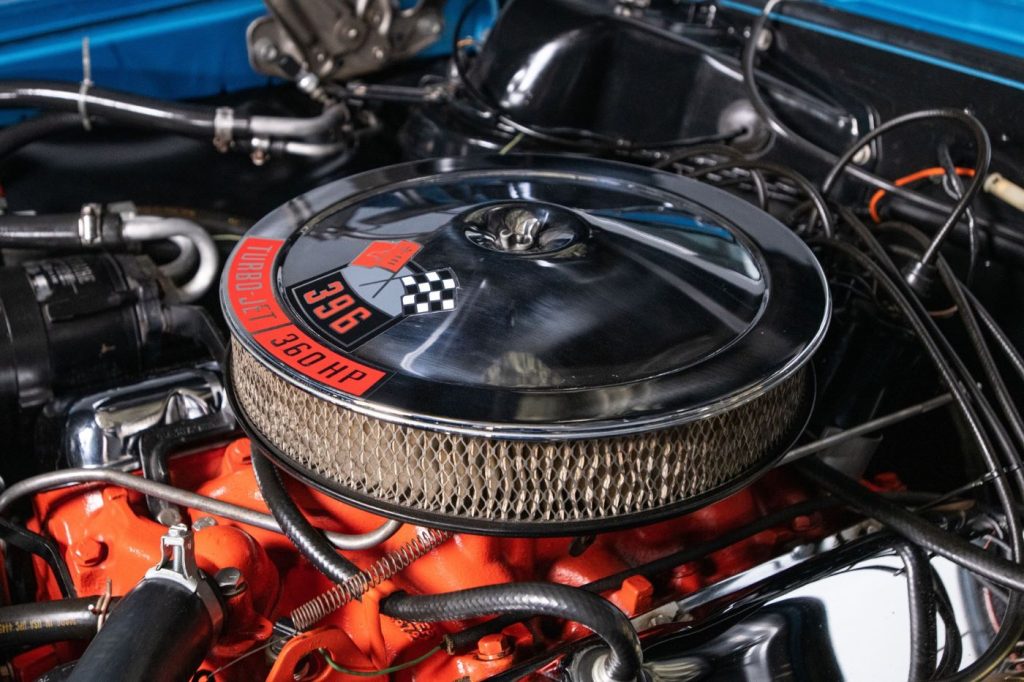
Engine Specifications And Applications
Even without a massive V-8, the Camaro carved out its place in muscle car history and carried that performance identity all the way through to 2024, when the model was, unfortunately, discontinued. That reputation began with the introduction of the 396-cubic-inch Turbo-Jet V-8.
Despite what the name suggests, this engine wasn’t turbocharged—but it definitely packed enough power to earn respect. The 396 came in three output levels, with the highest-rated version pushing 375 horsepower, found under the hood of the 1968 Camaro SS.
It’s no accident that the modern Camaro continued to rely on a sub-400-cubic-inch V-8. That design choice isn’t just engineering—it’s tradition. It reflects the roots of what made the Camaro a street contender from the very beginning.
Chrysler FirePower 392
Maximum Power: 375 Horsepower
While the Chrysler 392 FirePower V-8 never officially made its way into a muscle car, its significance in muscle car history is undeniable.
This engine featured hemispherical combustion chambers, making it the first in the legendary line of Hemi engines—although Chrysler didn’t market it under the Hemi name at the time.
Originally built for the 1957 Chrysler 300C, the 392 FirePower was the most powerful engine available during that era, effectively making the 300C the first true factory performance car. The only reason it didn’t earn the title of the first muscle car was its high price tag—accessibility has always been a key ingredient in defining the segment.
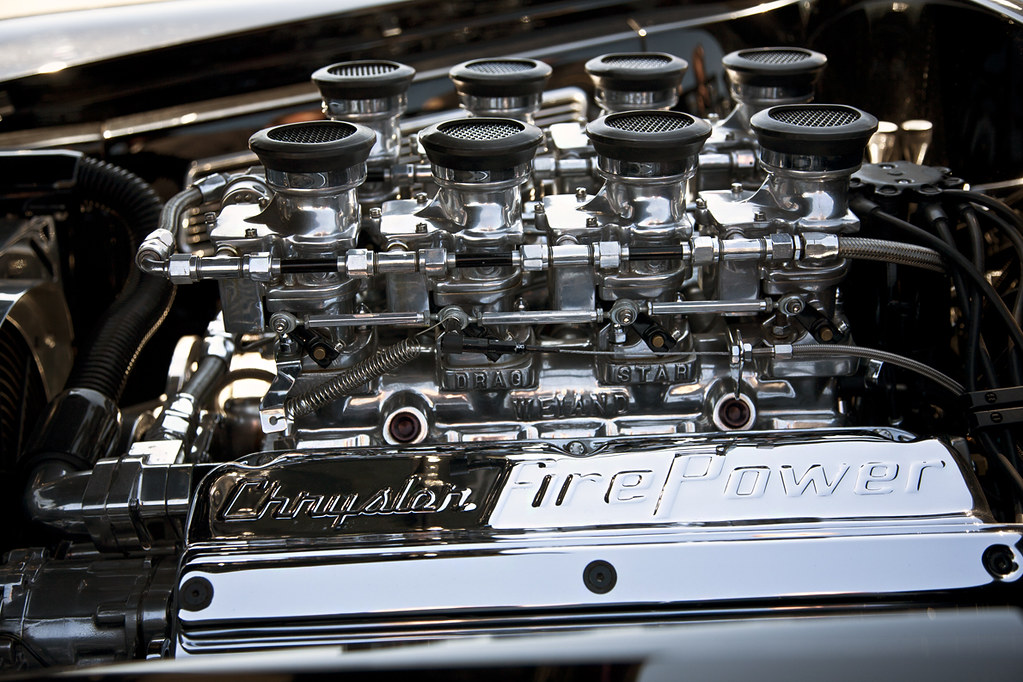
Engine Specifications And Applications
Still, the 300C and its trailblazing 392 played a critical role in shaping what would become the muscle car formula. It proved that there was a viable market for factory-built high-performance machines and paved the way for what followed.
Most notably, it set the stage for the 426 Street Hemi—the V-8 that would go on to dominate the Golden Age of American Muscle and become a street-racing legend. The legacy of the 392 didn’t fade with time.
In fact, it reemerged stronger in the modern muscle era. In 2012, Dodge introduced a 6.4-liter Hemi V-8 rated at 470 horsepower, and anyone familiar with the metric-to-imperial conversion will know—that’s 392 cubic inches. The name came full circle, and the FirePower spirit lived on.
Ford 429 Cobra Jet
Maximum Power: 375 Horsepower
When the Ford Mustang was introduced mid-model year in 1964, it was an immediate hit, becoming one of the most iconic and longest-running nameplates in automotive history.
Designed primarily for fun rather than raw performance, even the high-performance Shelby GT variants couldn’t match up to the muscle cars from GM or Mopar.
However, by the late 1960s, Ford began offering some serious big-block options and gave the Mustang a more aggressive fastback design, transforming the once-playful pony car into a menacing street machine.
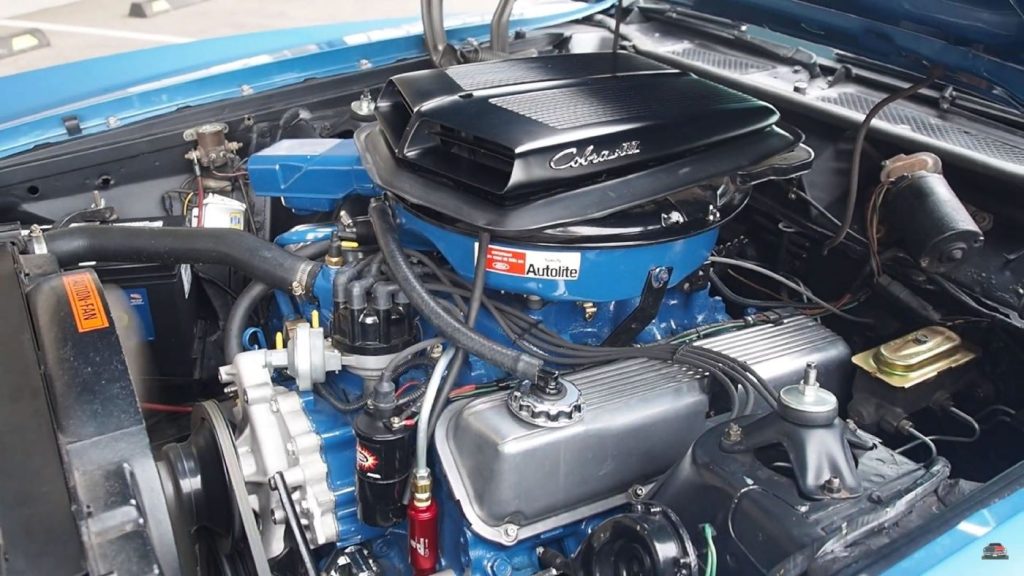
Engine Specifications And Applications
Ford’s goal was to homologate their new 429-cubic-inch Cobra Jet engine for NASCAR and other competitive racing circuits, so they dropped it into the 1969 Mustang fastback, creating the legendary Boss 429.
Alongside the ’69 Mach 1 428, the Boss 429 became the first Mustang that could truly be called a muscle car, marking the birth of Ford performance.
It laid the foundation for all the wild horsepower modern Mustangs boast today. Perhaps one day, Ford will resurrect the Boss 429, potentially with an even more powerful 7.3-liter Megazilla V-8.
Chrysler Max Wedge 426
Maximum Power: 425 Horsepower
The Chrysler Max Wedge 426 not only paved the way for the Hemi V-8, but it also served as the final piece needed to create what would become the most legendary muscle car engine ever.
The Max Wedge 426 debuted in the early 1960s as a non-catalog option on Chrysler models, initially available with single four-barrel carburetors, and later in dual-quad versions that delivered between 373 and 421 horsepower.
By 1963, the Max Wedge 426 was offered in B-Body Dodge and Plymouth models, transforming them into bona fide street monsters. With 425 horsepower under the hood, the 1964 Plymouth Sport Fury became the first true muscle car with real muscle.
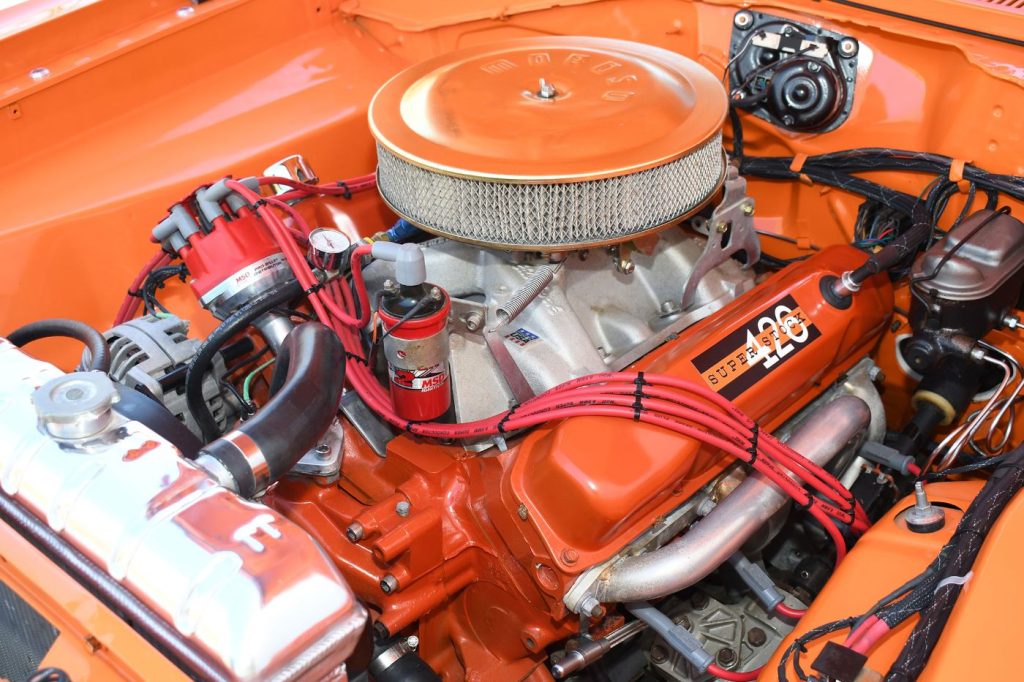
Engine Specifications And Applications
The reason why the Dodge and Plymouth intermediates with either the Max Wedge 413 or 426 aren’t recognized as the first muscle cars is because the 1964 Pontiac GTO marketed itself as such, tapping into the youthful, performance-hungry demographic.
However, the Max Wedge cars were undeniably among the most fearsome machines of the early Golden Age.
The 426 Max Wedge set the stage for the cubic inch standard of the soon-to-come Street Hemi, along with the magical 425-horsepower output that made it a dominant force on the streets.
When Dodge revived the Charger in the mid-2000s, they brought it back with a 5.7-liter Hemi V-8 and a 6.1-liter Hemi, both of which coincidentally produced exactly 425 horsepower—echoing the legacy of the Max Wedge 426.
Also Read: Top 10 Cars With the Best Cooling Systems for Long-Lasting Engines
Chrysler 426 Street Hemi
Maximum Power: 425 Horsepower
The Hemi V-8 stands as the most important muscle car engine across any era, and we can thank Ford for making that happen. The 426-cubic-inch Hemi V-8 was originally developed as a NASCAR engine, and in the 1964 Plymouth Belvedere driven by Richard Petty, it was simply unstoppable.
Rather than developing an engine that could rival the Hemi, Ford complained to NASCAR, which then banned the Hemi until it was homologated, meaning Chrysler had to sell a specific number of these engines to the public.
Homologation rules were typically pretty lenient—usually requiring around 1,000 units—but Chrysler went above and beyond, offering the 426 Street Hemi as an option on all intermediate Dodge and Plymouth models.
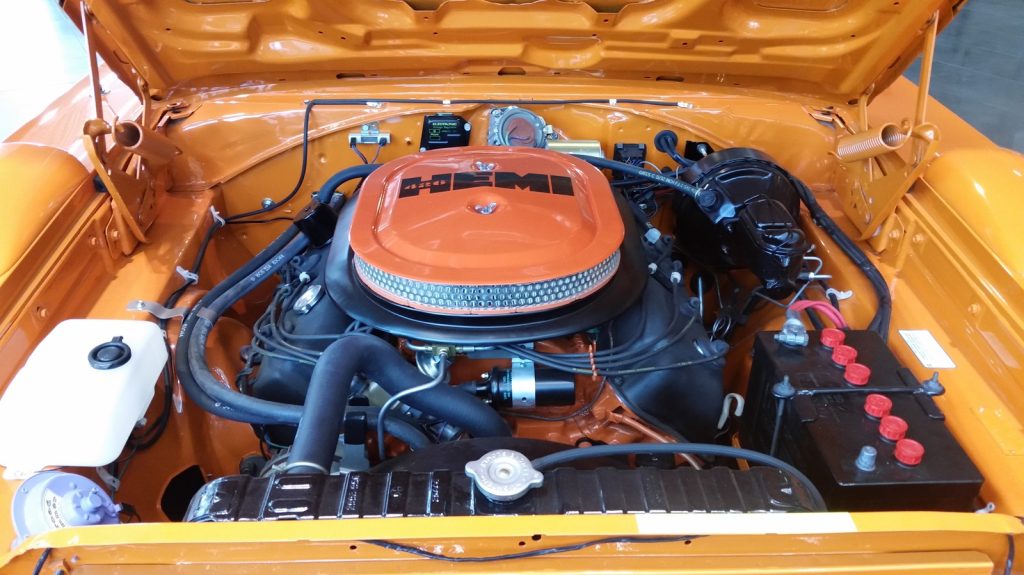
Engine Specifications And Applications
When the 426 Street Hemi hit the streets in 1966, it completely dominated the Golden Age of muscle cars, as no other ride could keep pace with the Mopar machines. But the Hemi V-8 became even more legendary when it appeared in the 1970 Plymouth Hemi ‘Cuda.
Every vehicle with the 426 Street Hemi was capable of running the quarter-mile in 13 seconds, with most clocking in the mid-13s. However, the ’71 Hemi ‘Cuda actually posted a quarter-mile time of 13.1 seconds, which made it two-tenths of a second faster than the 1970 Hemi ‘Cuda—an improvement that defies logic.
As the modern muscle car era revived, Dodge kept the Hemi legacy alive by equipping the revamped Charger and Challenger with Hemi V-8s, ensuring that the street dominance of these cars continued.
Chevrolet 427 Z11
Maximum Power: 430 Horsepower
Much like the Chrysler FirePower 392, the Chevrolet 427 Z11 V-8 wasn’t installed in a standard production muscle car, but it holds a unique place in muscle car history, albeit in a more unconventional way.
The W-Series 409-cubic-inch dual-quad V-8 became a street legend, thanks in part to the Beach Boys’ song “409,” which helped make it iconic in the third-generation Chevrolet Impala.
Chevy wanted to take that street legend to the track, so they stroked the 409 out to 427 cubic inches and placed it in 50 special 1963 Impalas, marketed as factory drag cars. With a quarter-mile time of 10.8 seconds, Chevrolet succeeded in creating the ultimate drag racing machine.
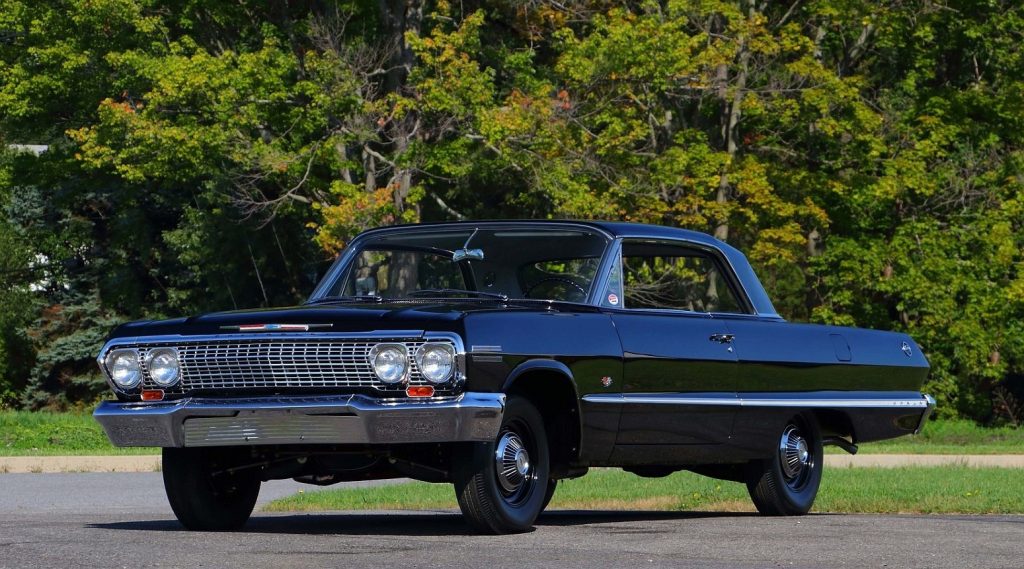
Engine Specifications And Applications
Here’s where things get odd. Chevrolet did, at one point, consider offering the 427 V-8 as an option in their production cars. However, GM imposed a ban on all its divisions from participating in racing or offering engines over 400 cubic inches in their intermediate cars.
The coincidence of the timing between the release of the Impala Z11 and GM’s corporate ban in 1963 can’t be ignored.
It’s possible that GM, recognizing the raw power of the 427 Z11, foresaw potential legal troubles and decided to halt any further involvement in high-performance engine production. Had the Chevelle and Camaro been given access to the 427 Z11, it’s likely that Mopar wouldn’t have ruled the Golden Age of muscle cars.
Chevrolet 454 LS6
Maximum Power: 450 Horsepower
In 1970, GM finally ended its arbitrary ban on large engines, though it came just as the Golden Age of American Muscle was nearing its end. While 1971 would mark the last great year for muscle cars, 1972 ushered in the “Dead Horsepower Era,” where engines were detuned to the point of becoming a shadow of the powerful machines they once were.
Chevrolet capped off the classic era in spectacular fashion with the 454ci LS6 V-8 in the 1970 Chevelle SS.
With a maximum output of 450 horsepower, this powerhouse claimed victory in the horsepower wars and, more importantly, finally gave Chevrolet fans an engine that could compete with the mighty Hemi-powered Mopars.
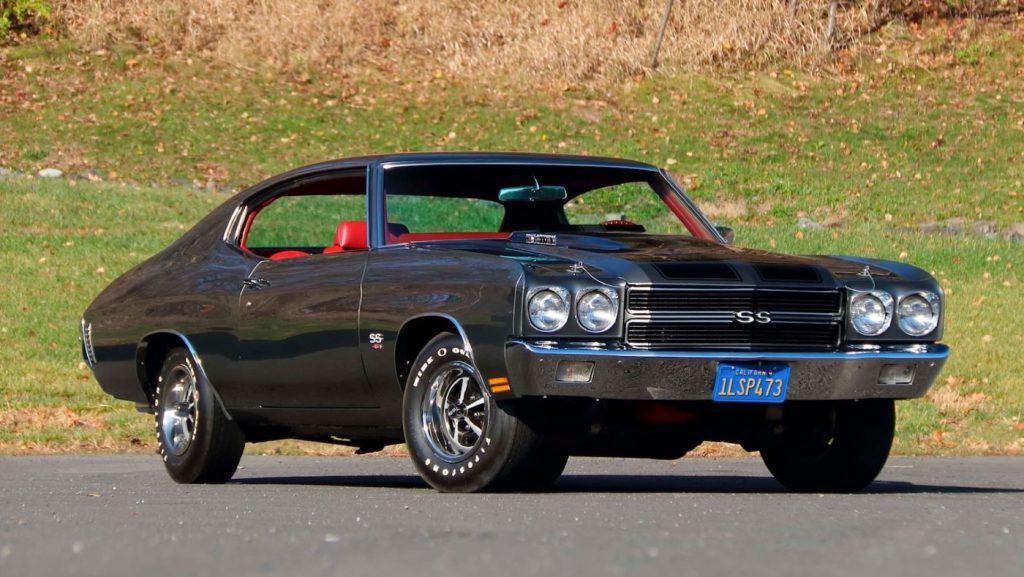
Engine Specifications And Applications
The 1971 LS6 dropped to 425 horsepower, still impressive, but a noticeable step down. The 454 serves as a perfect marker for the decline of the classic muscle car, as its horsepower rating started at 450, dropped to 425, and by 1972, it had fallen to 270. By 1974, when it was discontinued, it had become a mere 245-horsepower shadow of its former self.
In its prime, particularly in 1970, the 454 LS6 was undoubtedly the most powerful muscle car engine of its time, and its performance figures would go on to influence the power ratings of the modern Camaro SS.
It’s shocking, though, that Chevy discontinued the Camaro in 2024, and even more surprising is that the Chevelle never received a reboot, perhaps with a 7.4-liter big-block SS performance package to give it the proper revival it deserved.

